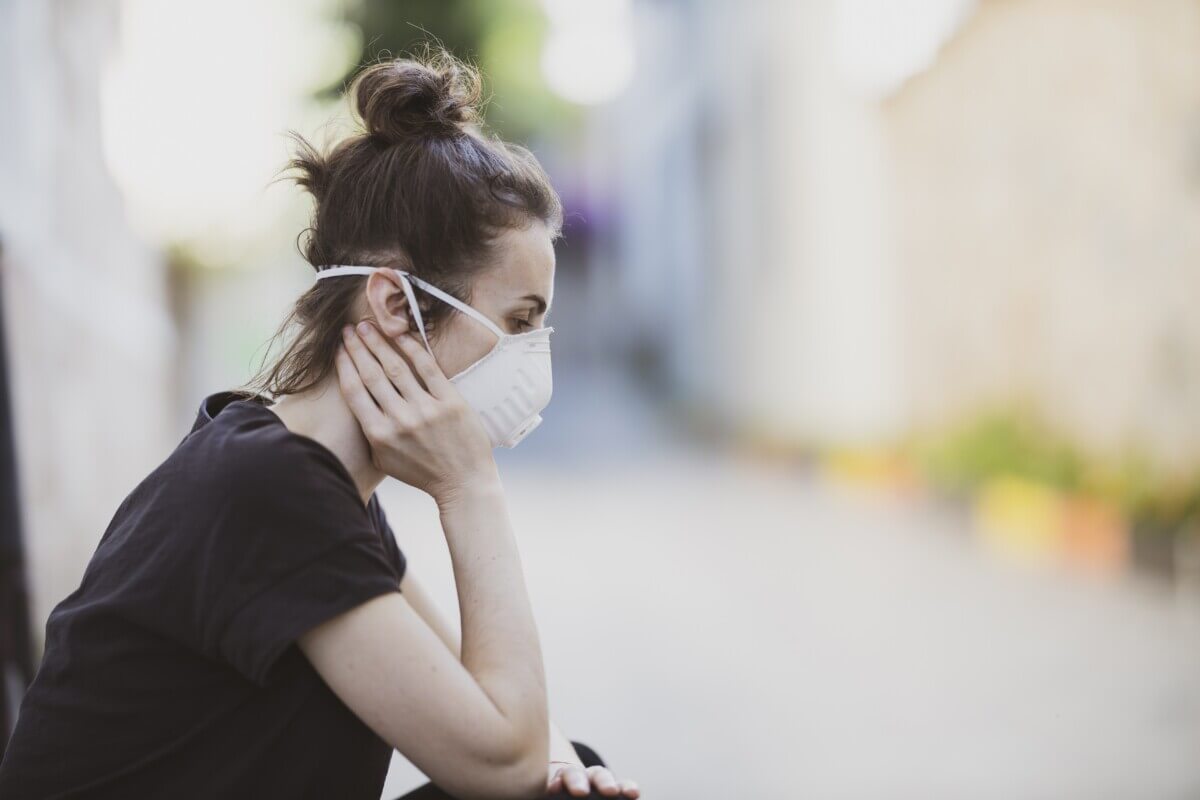
Engin_Akyurt / pixabay.com
COLLEGE PARK, Md. — When it comes to protecting others from respiratory viruses, the type of mask you wear matters. A new study has found that N95 respirators are significantly more effective than cloth masks, surgical masks, and KN95 respirators at reducing the amount of viral particles exhaled by people infected with COVID-19.
The study, conducted by researchers at the University of Maryland, is the first controlled human study to directly compare the efficacy of different mask types as “source control” – blocking respiratory viruses exhaled by infected individuals. Using a special bioaerosol collector, the researchers measured the amount of SARS-CoV-2 RNA in breath samples from 44 COVID-positive volunteers, with and without masks.
The results published in The Lancet were striking. On average, wearing an N95 respirator reduced the viral particles exhaled into the air by a whopping 98% compared to no mask. In comparison, cloth masks blocked 87% of the virus, loose-fitting surgical masks blocked 74%, and KN95s blocked only 71% on average.
Despite the variability in individual results, the overall trend was clear – N95s outperformed all other mask types by a significant margin when it came to containing exhaled virus. The researchers calculated that an N95 is capable of reducing transmission risk by a factor of 20, compared to not wearing a mask at all.
“Our findings support strong recommendations that face masks should be worn in areas with high risk of transmission,” says study lead Dr. Donald Milton in a media release. “N95 respirators could become the standard of care for source control in healthcare settings. They should be worn by healthcare workers to protect their vulnerable patients, as well as themselves.”
Methodology
To assess the efficacy of masks as source control, volunteers provided two 30-minute breath samples back-to-back — first while wearing a mask, then without a mask. This allowed each person to serve as their own control for comparison.
Importantly, the researchers intentionally did not provide any training on proper mask usage to the volunteers. They wanted to mimic real-world conditions as closely as possible. The only instructions given were to pinch the nose wire if present and how to position the straps on the N95s.
Aerosol samples were collected in two size ranges: fine particles under five microns in diameter that can remain airborne for extended periods and larger coarse particles over five microns that settle more quickly. The amount of SARS-CoV-2 RNA in each sample was then precisely measured using PCR testing.

Results
After controlling for factors like age, sex, coughing frequency, and which COVID variant the person was infected with, N95 respirators remained the clear winner. On average, N95s reduced fine aerosol viral particles by 99% and coarse aerosol viral particles by 94%.
Cloth masks came in second place, reducing fine and coarse particles by 92% and 74% respectively. Surgical masks ranked third with 81% reduction in fine and 54% reduction in coarse viral aerosols. KN95s surprisingly performed the worst, with 79% fine and 48% coarse aerosol reduction.
The researchers quantified the relative source control performance of the different masks by comparing outward “leak fractions.” Leak fraction represents the proportion of virus that escapes through and around a mask during exhalation. A lower leak fraction equates to better source control.
N95s showed leak fractions 94% lower than KN95s on average. Compared to surgical masks, N95s reduced leak fractions by 93%. Even against well-fitting cloth masks, N95s still demonstrated an 87% reduction in leak fraction, a statistically significant improvement.
“Duckbill N95 masks should be the standard of care in high-risk situations, such as nursing homes and health care settings,” says first author Dr. Jianyu Lai. “Now, when the next outbreak of a severe respiratory virus occurs, we know exactly how to help control the spread, with this simple and inexpensive solution.”
Potential Limitations
The study does have some limitations to keep in mind when interpreting the results. The study population consisted mostly of young adults with mild symptoms, so the findings may not directly translate to older or sicker individuals.
Most of the surgical masks and KN95s tested were limited to a single brand, so performance may vary for other products. The cloth masks were an assortment of types and fits brought in by participants. Neck gaiters, bandanas, and double masking were not evaluated.
Also, the unmasked viral levels were often higher for the KN95 and N95 groups compared to cloth and surgical masks. This is because more of those respirator samples were collected during the Delta and Omicron waves, when viral shedding tended to be higher, while more of the cloth and surgical mask data came from earlier variants. The researchers controlled for this potential confounding factor in their analysis.
Discussion & Takeaways
This study provides real-world evidence that N95 respirators are the gold standard when it comes to reducing the spread of viral respiratory particles, even without special fit testing or training. Wearing an N95 properly can make a dramatic difference in blocking the virus from being exhaled into shared air spaces.
As the COVID pandemic persists and new viral threats inevitably emerge, these findings have important implications for infection control policies and public health guidance. While any mask is better than no mask, N95s should be the first choice in high-risk settings like hospitals, nursing homes, and crowded indoor environments when virus transmission is prevalent.
Improved respiratory protection policies are needed that are graded appropriately to the level of risk. These new insights on source control efficacy will help inform those policies and highlight the critical role of masks and respirators as part of a multi-layered strategy to reduce airborne transmission of dangerous pathogens now and in the future.










